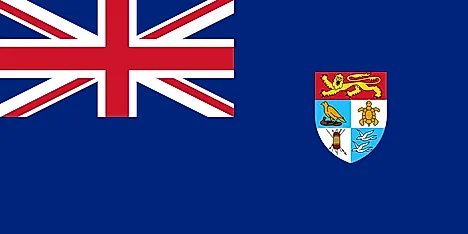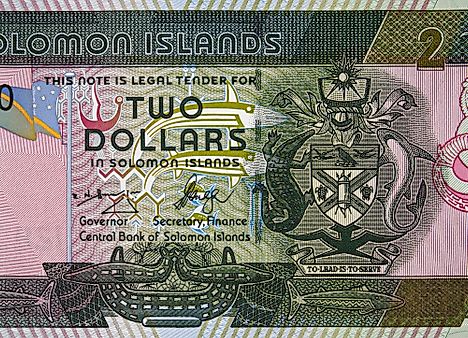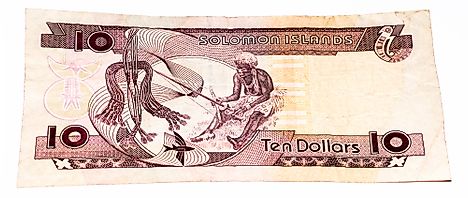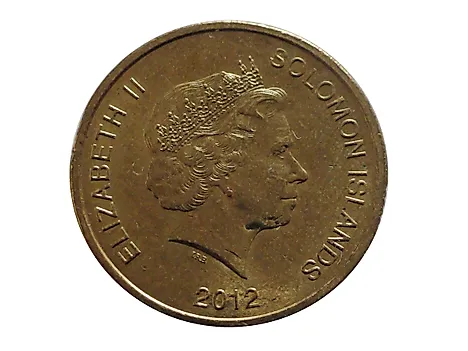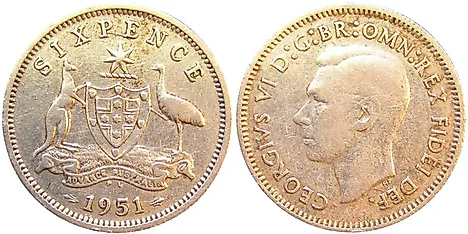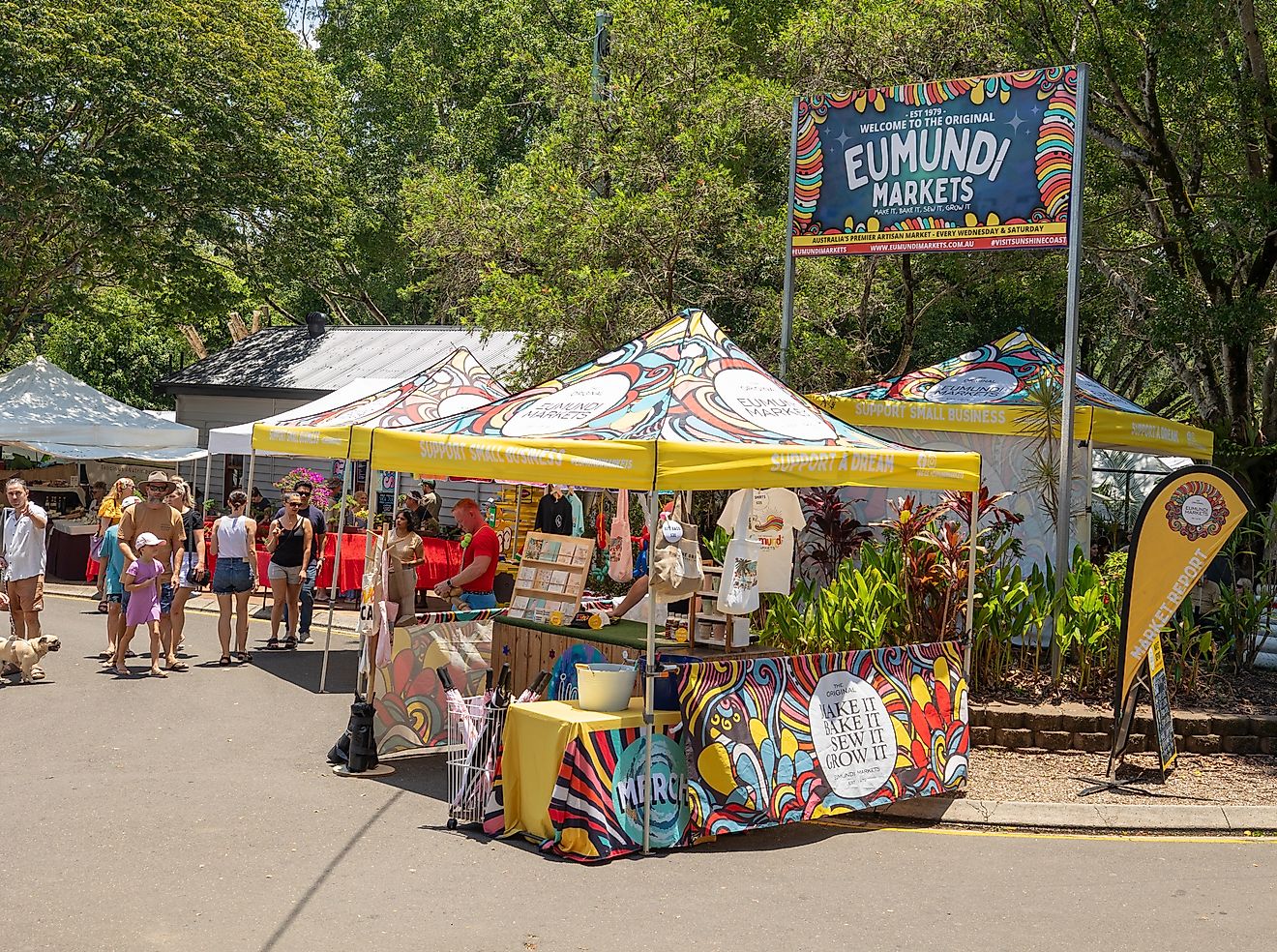Flags, Symbols & Currency of Solomon Islands
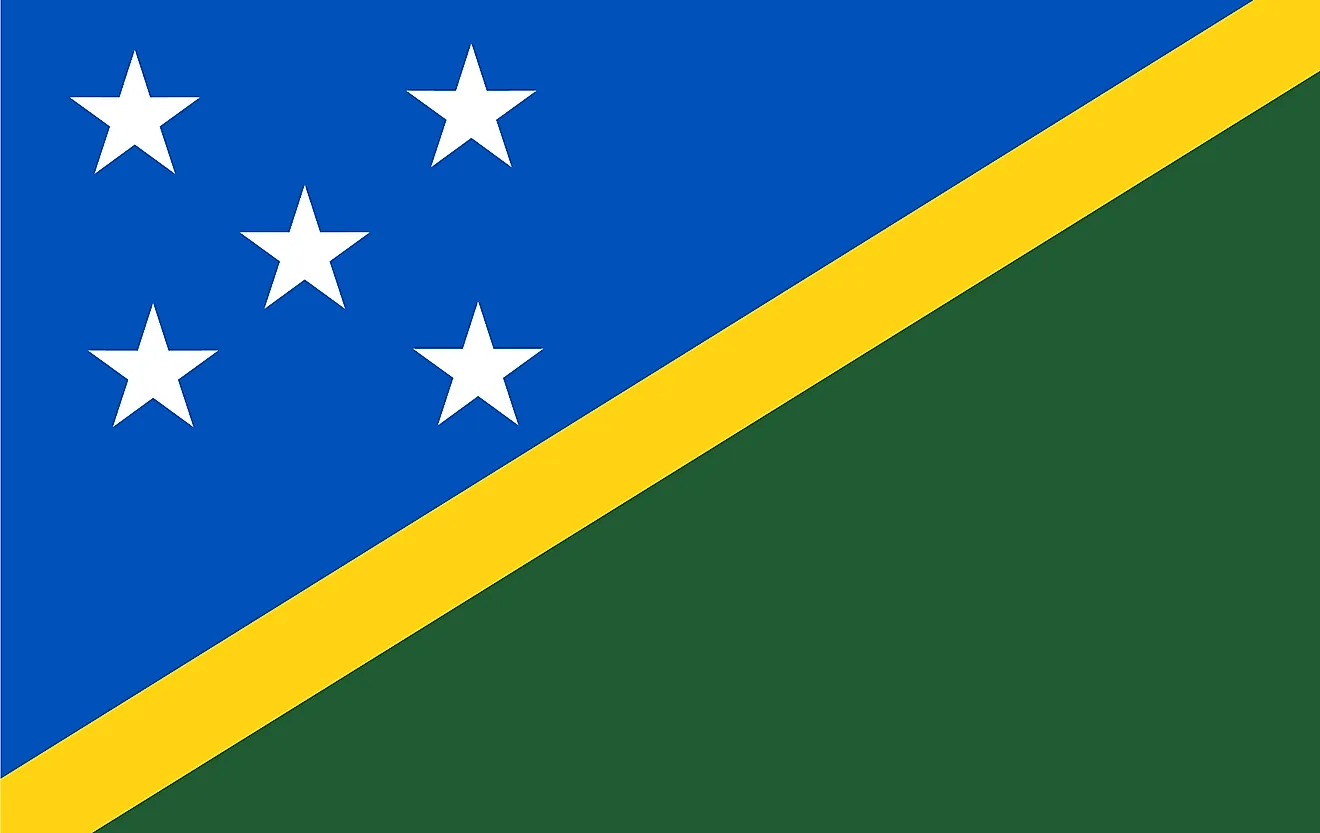
The national flag of the Solomon Islands is divided diagonally by a thin yellow stripe from the lower hoist-side corner; the upper triangle (hoist side) is blue with five white five-pointed stars arranged in an X pattern; the lower triangle is green; blue represents the ocean, green the land, and yellow sunshine; the five stars stand for the five main island groups of the Solomon Islands
History of the Flag of the Solomon Islands
During the period when the Solomon Islands was a British Protectorate, the Union Jack and the Red Ensign were in use in the archipelago. The Blue Ensign was also used but it bore the name of the protectorate and the crown of the monarch. However, when the country became independent, the use of the symbols of the United Kingdom was discontinued. Just prior to independence, a contest was held in 1975 to design a new flag for the country. On November 18, 1977, a flag was selected to serve as the new flag of the Solomon Islands.
Symbols of Solomon Islands
Coat of Arms of Solomon Islands
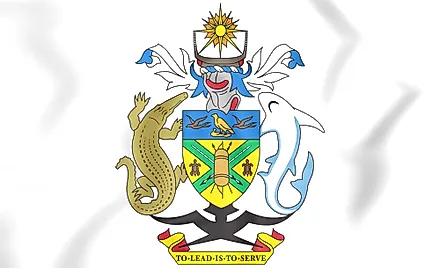
The Solomon Islands' coat of arms is one of the important national symbols of the country. It features a shield with a crocodile to the left and a shark to the right. The shield is surmounted by a helmet with decorations and crowned by a stylised sun. The shield also bears several symbols and is supported on a stylised two-headed Frigate bird Sable. Below the bird is a banner with the words "To Lead Is to Serve" which is the national motto.
National Motto
"To Lead Is to Serve"
National Anthem
- Anthem Title: God Save Our Solomon Islands
- Composer: Panapasa Balekana
- Lyricist: Panapasa Balekana/Matila Balekana
- Date of Adoption: 1978
The national anthem of Solomon Islands is called "God Save Our Solomon Islands." The anthem was adopted following the independence of the country in 1978 through a government competition. The music is composed by Fijian-born Solomon islander Panapasa Balekana and the lyrics are jointly written by him and his wife Matila Balekana.
God Save Our Solomon Islands
God Save our Solomon Islands from shore to shore
Blessed all our people and all our lands
With your protecting hands
Joy, Peace, Progress and Prosperity
That men shall brothers be, make nations see
our Solomon Islands, our Solomon Islands
Our nation Solomon Islands
Stands forever more.
The Currency of Solomon Islands is the Solomon Islands dollar
The legal tender of the Solomon Islands is known as the Solomon Islands dollar. The currency ISO code is SBD and it is denoted as SI$.1$ is made up of 100 subunits called cents. It is issued by the country’s central bank. It was introduced in 1977.
History Of The Solomon Islands dollar
When the country became independent in 1977, it started issuing its own dollar to replace that of Australia at parity. Both dollars were equal in value until 1979. However, due to economic standstill and civil war that ensued in the country between 2000 and 2003, 1 SBD was equal to 15 Australian cents in 2007.
Coinage
Minting of the Islands’ coins is done by the Royal Australian Mint. The country has had two series of coins. The first series was issued in 1977. There were 1 dollar coins and cents coins with values of 20, 10, 5, 2, and 1 cent. They were similar to the Australian coins of similar values and they featured significant symbols of the Islands. The 50 cent coin was introduced in 1988. Later, 2 and 1 cent coins were phased out due to inflation.
The second series was issued in 2012 and the coins were smaller than those of the previous series in a bid to reduce the minting cost. The new coins have values of 50, 20 and 10 cents and they also have 1 and 2 dollar coins. They bear Queen Elizabeth II portrait as the head of state.
Banknotes
The series introduced in 1977 were in values of 10, 5 and 2 dollars. 1980 saw the introduction of 20 dollar bills. Notes of 50 dollars were issued in 1986 and 100 dollar bills in 2006. Starting from 2006, several security characters are featured on the banknotes. The 100 and 50 dollar banknotes, for example, have micro-printed holographic foils, tapered serial numbers, woven security threads and brighter colours in the background. They are printed by De La Rue and issued by the Islands’ Central Bank.
Historical Currencies Of The Solomon Islands
Prior to the introduction of the Solomon Islands dollar in 1977, the country used the Australian pound sterling but also had banknotes called Solomon Islands pound. For a while during the World War II, Japanese invasion of the islands led to the establishment of the Oceanian pound as the currency in the region. After the war, the Australian pound once more became the currency of the country. In 1966, the pound was replaced by the Australian dollar and continued to reign till 1976.
